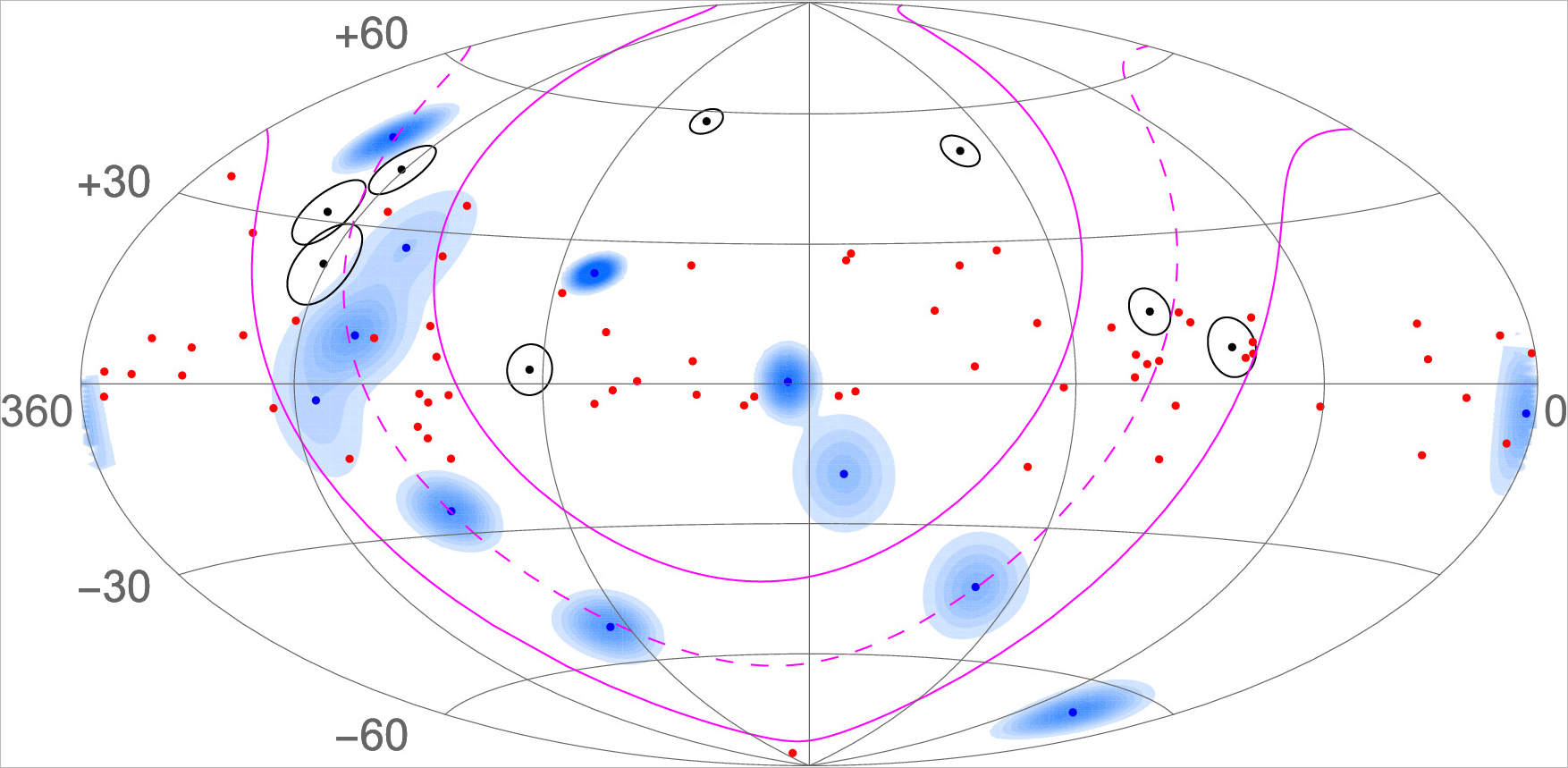Galactic neutrino flux with energy of 200 TeV detected by Baikal-GVD
News, 14 April 2025
Members of the Baikal-GVD Collaboration analysed the events registered by the deep underwater Baikal neutrino telescope from 2018 to 2023. The result of the scientific team’s work was the detection of neutrinos with estimated energies above 200 TeV. An article about the research results was published in the Astrophysical Journal.
 Arrival directions of neutrinos in Baikal-GVD and IceCube. The dashed magenta line represents the Galactic plane
Arrival directions of neutrinos in Baikal-GVD and IceCube. The dashed magenta line represents the Galactic plane
The Baikal-GVD Telescope (Gigaton Volume Detector), one of the world’s largest neutrino detectors, is located in Lake Baikal at a distance of 3.6 km from the shore and about 1300 m below the water’s surface. This unique megascience facility allows detecting ultrahigh-energy particle fluxes from astrophysical sources. It will help scientists study not only ancient processes that released huge amounts of energy, but also the mechanisms of galaxy evolution, supermassive black hole formation, and the acceleration of cosmic particles to ultra-high energies. Baikal-GVD is one of the world’s three currently operating large-scale neutrino telescopes. Along with the IceCube and KM3NeT Observatories, it forms the Global Neutrino Network.
Scientists found that the average angle of deviation of the recorded events from the midline of the Milky Way, the Galactic equator, was significantly less than the expected uniform distribution, suggesting an excess of neutrinos from low Galactic latitudes with the chance probability of 1.4 × 10-2. Experts compared Baikal-GVD and IceCube Experiment data analysis and found correspondences. A joint analysis of all neutrino events reduced the error probability down to 3.4 × 10-4.
Thus, the galactic neutrino flux from the Milky Way’s plane with an energy exceeding 200 TeV (teraelectronvolts) turned out to be significantly greater than expected. This result contradicts existing models of the origin of cosmic rays and requires revising fundamental concepts about their generation and propagation.
The origin of cosmic rays in the energy range from 1012 to 1020 electronvolts has remained one of the key mysteries of astrophysics for decades. Scientists note that high energy galactic neutrinos are probably formed together with photons when cosmic rays interact with matter and radiation. Unlike charged cosmic rays, they are not deflected by interstellar magnetic fields, allowing accurately tracking where they were born. Compared to photons, neutrinos are hardly absorbed or scattered, thus being able to reach the observer from remote or opaque sources.
Despite the difficulties associated with the large atmospheric background and the limited accuracy of individual event reconstruction, high energy astronomy is becoming a key tool in space exploration.